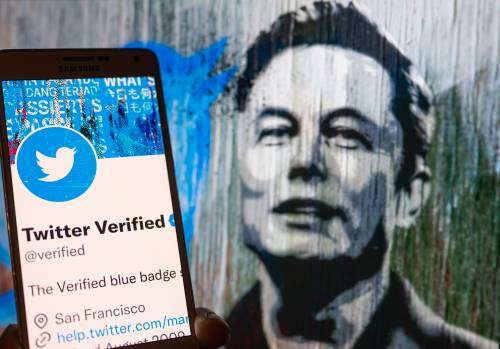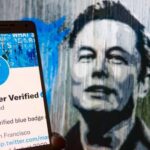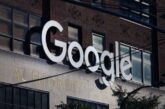
Shirin Ghaffary
is a senior Vox correspondent covering the social media industry. Previously, Ghaffary worked at BuzzFeed News, the San Francisco Chronicle, and TechCrunch.
This story is part of a group of stories called

Uncovering and explaining how our digital world is changing — and changing us.
If you were accustomed to a time when Twitter — while far from perfect — was a place where you could dependably digest a wide range of breaking news, politics, celebrity gossip, or personal musings, it’s time to accept a new reality.
Twitter is becoming a degraded product.
In the four months since Elon Musk took over the company, the app has experienced major glitches — such as when, last week, users around the world couldn’t post tweets, send messages, or follow new accounts for several hours. While Twitter, like other social media networks, has always had periodic outages, under Musk, the app’s unpredictability isn’t just limited to technical issues. Musk’s erratic decisions are degrading the integrity of Twitter’s core product and alienating wide swaths of users.
Musk’s Super Bowl meltdown, as reported by Platformer, is one of the clearest signs so far of Twitter’s decline. Musk, apparently livid because his tweets about the Super Bowl were getting fewer views than President Joe Biden’s, flew to Twitter’s headquarters and ordered engineers to change the algorithm underlying Twitter’s main product to boost his own tweets above everyone else’s so that they show at the top of Twitter users’ “For You” page. Musk’s cousin, James Musk — who is now a full-time employee and a reported “fixer type” within the company — reportedly sent an urgent 2 am message asking all capable engineers to help, and the company tasked 80 engineers to manually tweak Twitter’s underlying system to promote Musk’s tweets.
Soon after the change, many users started noticing their feeds had been bombarded with Musk’s tweets. Musk seemed to acknowledge the phenomenon, posting a meme showing a woman labeled “Elon’s tweets” force-feeding a bottle of milk to another woman labeled “Twitter,” and later posting that Twitter was making “adjustments” to its algorithm.
The episode demonstrates how Twitter has become less and less dependable. The platform’s basic product design is now tailored to the whims of Musk, a leader who seems to prioritize his own image and “free speech absolutist” ideology above business interests.
Do you work at Twitter and have thoughts about what’s going on at the company? Get in touch with Shirin Ghaffary confidentially at shirin.ghaffary@protonmail.com; Signal number available upon request.
A few examples: Musk, in the free-speech spirit of letting people say almost anything they want on Twitter, restored the accounts of thousands of previously suspended users, including neo-Nazi and QAnon accounts. That was one of the driving factors, researchers told the New York Times, behind a rise in hate speech on the platform, including an over 200 percent increase in anti-Black slurs from when Musk took over until December 2022 — upsetting many users who already struggled with harassment on the platform.
On the product front, Musk has rushed projects that have caused chaos on the platform. Musk’s most high-profile product, Twitter Blue, a paid version of the app that let anyone buy a verification checkmark badge, had a disastrous initial rollout. Musk — who has long beefed with the mainstream press — framed Twitter Blue as a way to take away the special privileges, such as checkmarks, that “elites” like journalists had on the platform, unless they paid up. But the poorly thought-out changes to Twitter’s verification policy ended up flooding the platform with spam, as newly verified accounts used their checkmarks to convincingly impersonate public figures, including Musk. The release was pulled back and delayed twice before finally coming out in December.
Under Musk, Twitter also recently blocked third-party apps that improved people’s experience on the app, like Tweetbot. While Twitter is promising developers a revamped paid version of its API, the way Twitter suddenly cut off access has soured its relationship with outside programmers whose add-on apps enriched the site.
Since Musk has laid off or fired more than half of Twitter’s staff, the people left to clean up the mess are short-handed. That includes teams that deal with fixing bugs, content moderation, and courting advertisers.
When Elon Musk first bought Twitter, even though many were skeptical about the billionaire, there was also some optimism that Musk could turn the company around. Investors hoped that Musk, the prolific and successful entrepreneur, could revive a company that was unprofitable and seen as not living up to its full business potential. Musk’s ideological supporters saw him, a self-appointed “free speech absolutist,” as someone who could make Twitter less restrictive and open to a wider range of speech.
Now we’re seeing Musk’s potential to improve Twitter — on the business and ideological fronts — unrealized.
On the business side, Twitter’s main line of revenue is in jeopardy as 500 big-name advertisers have paused spending on the platform since Musk took over, in large part over concerns about Musk’s overall erratic behavior and the rise in what researchers say is an “unprecedented” rise in hate speech on the platform. Twitter’s top 30 advertisers dropped their spending on Twitter by an average of 42 percent from when Musk took over until the end of 2022, according to Reuters. Musk’s solution to Twitter’s loss of advertiser dollars is to get more people to pay for Twitter, but that doesn’t seem to be working so far. Twitter only has around 180,000 people in the US who are paying for subscriptions to Twitter as of mid-January 2023, or less than 0.2 percent of monthly active users, according to a recent report by the Information.
While Musk claimed in November that Twitter’s user base is bigger than ever, outside data contradicts that claim. According to the data intelligence firm SimilarWeb, Twitter actually had higher traffic in March 2022 — before Musk took over — than it does now, and Twitter saw the growth in the number of visitors decline year over year from 4.7 percent in November 2022, when Musk took over, to -2 percent in Jan 2023.
On an ideological front, Musk’s Twitter has failed to live up to its free speech standards time and time again, starting with Musk suspending comedians like Kathy Griffin (who made fun of him) and barring users from talking on the platform about Twitter’s competitors, like decentralized social network Mastodon (after a flurry of criticism, Musk reversed the policy).
Even some popular figures who supported Musk for his free speech stance, like independent journalist Bari Weiss, have recanted their support after Musk banned several prominent journalists who have criticized him (Musk argued that the journalists doxxed him, which they denied). In recent months, former Twitter CEO and co-founder Jack Dorsey, who in April endorsed Musk as his successor and said he is the “singular solution” he trusts to run Twitter and “extend the light of consciousness,” has also shifted his stance and started to openly criticize Musk’s leadership, including all the recent technical glitches.
The main group of people who seem to steadfastly support the new Twitter is conservative figures and politicians. After Musk granted amnesty to many suspended accounts of right-wing provocateurs and political leaders, including shock jock Andrew Tate, Rep. Marjorie Taylor Greene (R-GA), and former President Donald Trump, Musk has achieved hero status in right-wing circles, and has even had Republican-led legislation drafted in his name that would require the Department of Justice to disclose money it spends on Big Tech companies. Musk has also earned conservative admiration for his work to uncover examples of alleged liberal bias in Twitter’s old guard, most prominently with the “Twitter Files,” a series of documents showing how Twitter made decisions about its content policies with input, at times, from US politicians and government agencies.
Even if Musk’s conservative fans love how he’s running Twitter, if the app is glitchy and more users leave the platform altogether, it won’t be of much use to them anymore. Nor will it be for Musk, who needs a healthy, money-making app in order to pay back some $13 billion he borrowed from creditors to buy Twitter.
Sourse: vox.com






